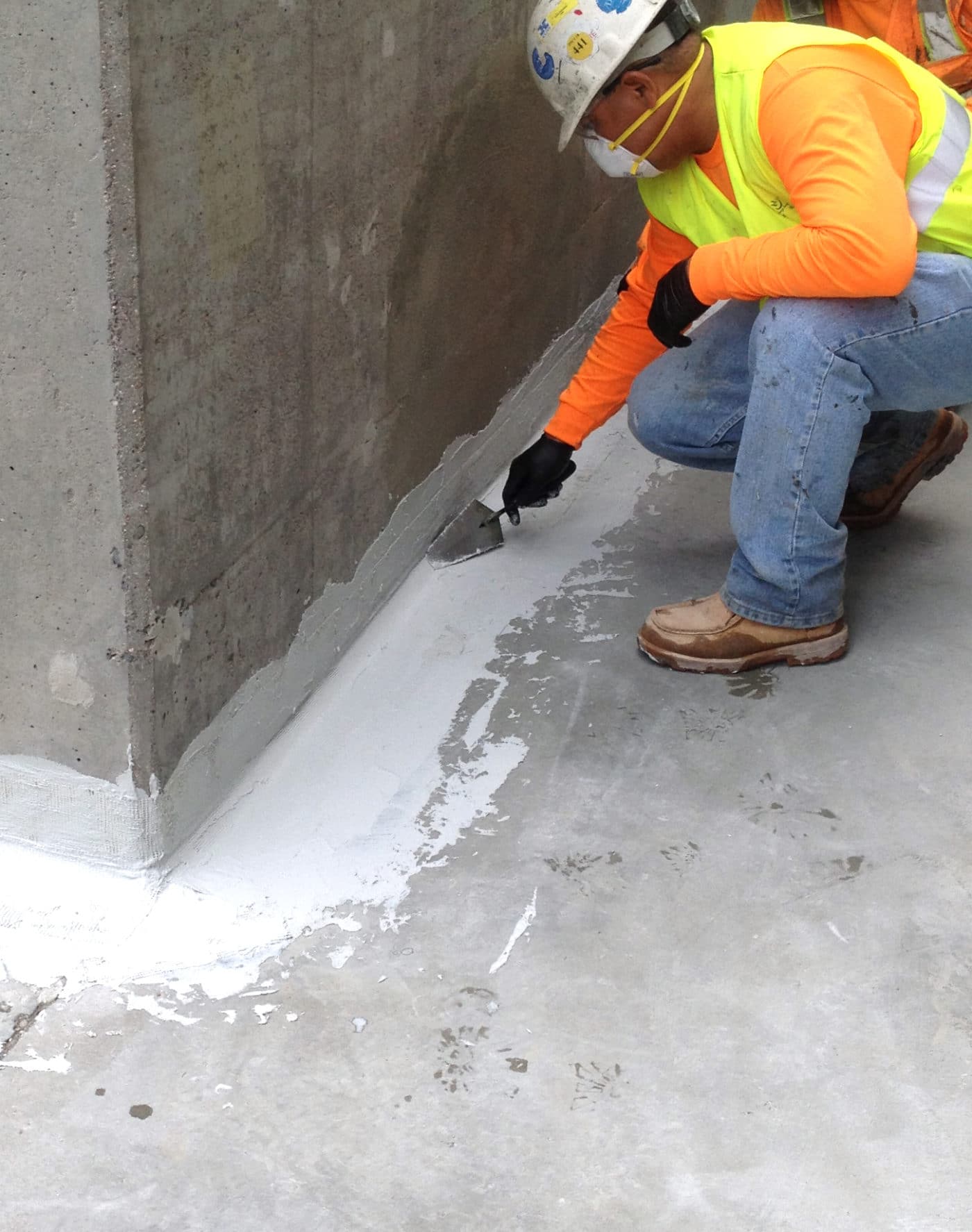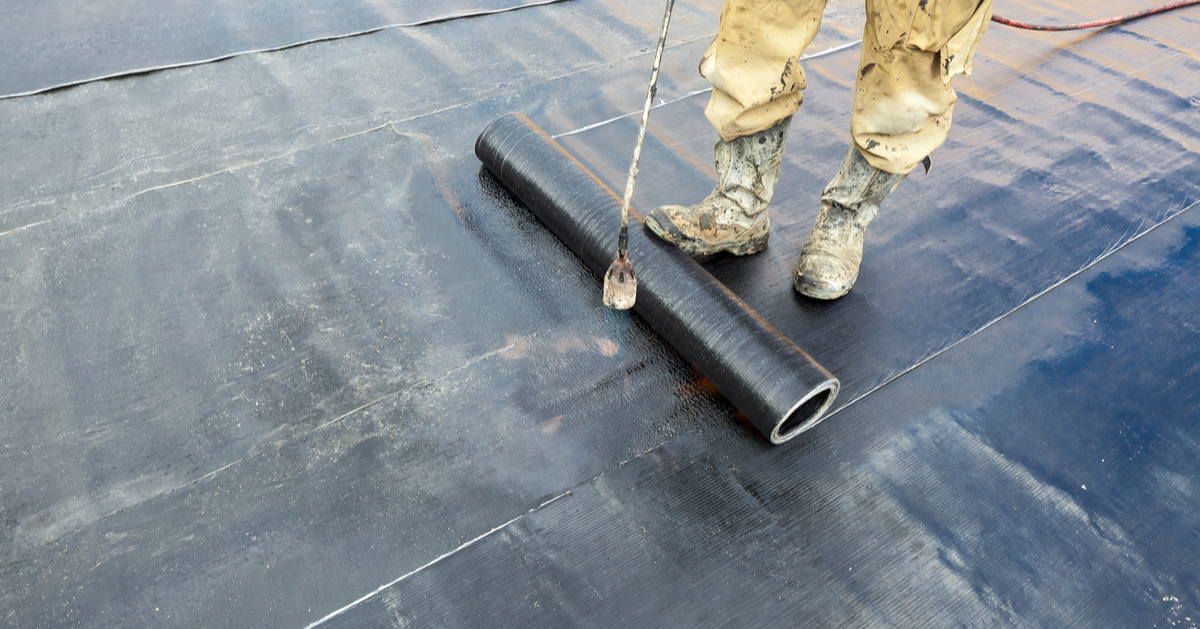How Waterproofing Works: A Comprehensive Appearance at Strategies and Technologies
Waterproofing is important for safeguarding structures from moisture-related damage. It involves different techniques and modern technologies that produce obstacles against water breach. Conventional methods, such as compressed clay, coexist with modern-day developments like liquid-applied membrane layers. Understanding the subtleties of these techniques is vital for reliable application. The performance of any waterproofing option hinges not only on the methods made use of but also on continuous upkeep and inspection. What are the essential elements that influence long-term performance?
Understanding the Fundamentals of Waterproofing
Waterproofing is an essential process that safeguards frameworks from water breach, which can lead to considerable damages with time. This method involves the application of various materials and methods created to develop an obstacle versus dampness. The primary objective is to prevent water from passing through surfaces, which can cause degeneration, mold and mildew growth, and structural instability.Various aspects influence the option of waterproofing approach, consisting of the kind of framework, its area, and ecological problems. Recognizing the physics of water activity and the residential properties of various products is important in choosing an effective waterproofing solution.Effective waterproofing not only safeguards structures yet additionally improves their durability and integrity. Typically, it is integrated right into the layout stage of building to guarantee comprehensive security. As understanding of water-related problems grows, the relevance of recognizing waterproofing basics becomes significantly clear to engineers, building contractors, and residential property owners alike.
Traditional Waterproofing Approaches
Standard waterproofing techniques have actually been used for centuries, counting on reliable methods and materials to guard structures from water damages. Among the oldest approaches involves making use of clay, which, when compacted, creates a natural barrier versus moisture. In addition, bitumen, a sticky, black product stemmed from oil, has actually been used for its waterproof buildings, typically applied to roofing systems and foundations.Another strategy entails the application of lime-based plasters, which supply a breathable layer that allows dampness to get away while stopping water ingress. Thatch roofing, a standard method still seen in some cultures, supplies outstanding waterproofing as a result of its tightly packed straw layers.Moreover, making use of rock and brick has actually been prominent, as these materials are naturally resistant to water when properly set up. On the whole, traditional waterproofing techniques stress the importance of selecting suitable products and construction practices to improve resilience against water breach.
Modern Waterproofing Technologies
Innovations in modern waterproofing innovations have actually changed the means structures are safeguarded from water damages. Innovative techniques such as liquid-applied membrane layers and innovative sealers have actually enhanced the effectiveness and flexibility of waterproofing options. These modern technologies permit seamless application, decreasing the danger of leaks and guaranteeing complete insurance coverage over intricate surfaces.Moreover, the assimilation of smart technologies, such as wetness sensing units and automated monitoring systems, enables real-time assessment of waterproofing performance. This aggressive strategy promotes prompt upkeep and lowers lasting repair service costs.Additionally, innovations in spray-applied layers supply quick application and outstanding bond, adapting to various substratums while giving durable protection. Strategies like polymer-modified systems better boost versatility and toughness, making them suitable for varied settings. Generally, modern waterproofing modern technologies not only alleviate water breach however likewise add to the longevity and sustainability of frameworks, noting a significant shift in the industry.
Materials Used in Waterproofing
The efficiency of waterproofing remedies heavily counts on the products used in their application. Numerous products are employed to develop barriers against water access, each with one-of-a-kind properties matched for different settings. Generally made use of products include membranes, discover this layers, and sealants.Liquid-applied membrane layers, often made from polyurethane or acrylic, create a smooth obstacle that adapts to complicated surface areas. Sheet membrane layers, usually constructed from rubber or polycarbonate, deal longevity and are ideal for bigger locations. In addition, cementitious waterproofing products, made up of cementitious compounds, give excellent adhesion and flexibility.Sealants made from silicone or polyurethane are crucial for joints and seams, guaranteeing extensive defense. Moreover, advanced products, such as geo-composite membrane layers, integrate numerous features, improving efficiency. Overall, the selection of waterproofing products is vital in attaining long-lasting and effective water resistance, customized to specific job demands and ecological problems.
Typical Applications of Waterproofing
Waterproofing plays an essential function in various industries, making sure the long life and stability of frameworks. Usual applications include property options that secure homes, business framework that safeguards organizations, and industrial settings that call for robust protection versus wetness. Recognizing these applications highlights the significance of waterproofing in keeping both security and capability throughout various settings.
Residential Waterproofing Solutions
Several property owners face obstacles with dampness breach, making effective domestic waterproofing options vital. Various methods exist to resolve this concern, including exterior and interior waterproofing systems. Inside solutions commonly include the application of sealers and layers to cellar wall surfaces, which aid avoid water infiltration. Exterior techniques commonly include the installment of drainage systems and waterproof membrane layers that draw away water away from the foundation.Additionally, house owners may consider sump pumps to get rid of water build-up and dehumidifiers to manage humidity levels. Appropriate grading and using gutters likewise play an essential function in managing water flow around the home. By carrying out these approaches, property owners can considerably minimize the threat of water damages and mold growth, making certain a completely dry and safe living setting.

Business Infrastructure Protection
Effective chimney waterproofing waterproofing services play an essential duty in the protection of industrial facilities. Landscape drainage Omaha. These methods are vital for guarding structures, parking structures, and bridges from water damages, which can compromise structural honesty and lead to expensive repair work. Typical applications consist of the installment of membranes, layers, and sealers that produce barriers versus wetness seepage. Locations such as basements, roofing systems, and exterior wall surfaces are frequently focused on to guarantee long life and toughness. Additionally, waterproofing systems can boost energy efficiency by stopping water-related problems that may lead to mold and mildew development and damage. By executing robust waterproofing actions, homeowner can safeguard their investments and keep operational effectiveness, ultimately adding to the total sustainability of industrial centers
Industrial Applications Overview
While different markets deal with one-of-a-kind difficulties, the demand for reputable waterproofing services continues to be a consistent in commercial applications. Industries such as production, building, and energy commonly experience settings where moisture direct exposure can jeopardize architectural stability and functional performance. In producing facilities, waterproofing is essential for securing machinery and materials from water this content damages. In building and construction, it safeguards structures and basements against groundwater infiltration. The power field depends on waterproofing for the security of equipment in hydroelectric plants and offshore structures. Furthermore, food handling sectors make use of waterproofing to ensure hygiene and conformity with safety criteria. Overall, efficient waterproofing services are necessary for enhancing resilience, safety, and efficiency throughout numerous commercial setups.
Maintenance and Durability of Waterproofing Solutions
Waterproofing remedies are developed to supply long-term defense against wetness invasion, normal upkeep is essential to assure their efficiency and durability. Regular examinations play a significant duty in identifying possible problems such as fractures, peeling off, or signs of water damages. Resolving these problems quickly can stop more degeneration and costly repairs.Additionally, cleaning up the surface of waterproof areas aids get rid of dust and debris that could compromise the stability of the waterproofing barrier. It's likewise advisable to reapply safety finishings or sealants as suggested by makers to preserve excellent performance. Ecological elements, such as UV exposure and severe climate condition, can affect the life expectancy of waterproofing products, making routine analysis crucial
Frequently Asked Inquiries
Can Waterproofing Be Applied in Winter?
The concern of using waterproofing in cold climate elevates concerns concerning bond and curing. Numerous products may not perform at their finest in reduced temperatures, requiring cautious choice and factor to consider of details guidelines for reliable application.
For How Long Does Waterproofing Typically Last?
The duration of waterproofing performance varies based on products and ecological elements. Typically, it can last from five to ten years, however normal upkeep and assessments are important to ensure peak performance and long life.
Is DIY Waterproofing Effective and Safe?
The efficiency and safety and security of do it yourself waterproofing depend upon different factors, including worldly top quality and application method. While some people achieve satisfactory outcomes, others might run into concerns that endanger lasting protection and structural stability.
What Are the Indicators of Failing Waterproofing?
Indications of stopping working waterproofing include visible water stains, peeling off paint, mold growth, stuffy smells, and wetness in walls or ceilings - Drainage & waterproofing company Omaha. These signs suggest endangered obstacles, necessitating timely inspection and prospective removal to avoid further damage
Exactly how Do I Choose the Right Waterproofing Professional?
